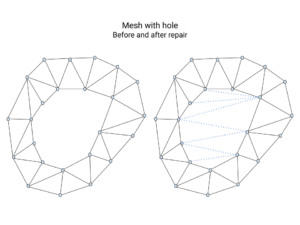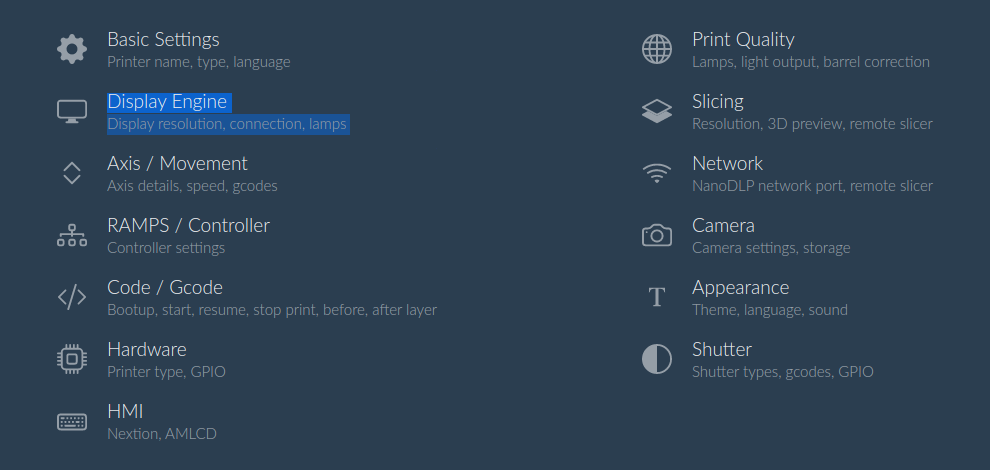One of the basic requirements of the LCD 3D printers are to display object as sliced frames, NanoDLP supports different display engines that could be used in different situation.
NanoDLP supports many way to display images, this post try to explain how each one works, what is the best and also give a workaround for cases which one engine does not work well enough.
BCM (DispmanX)
It is a way to communicate directly with Raspberry Pi (Broadcom SOC) to display images. Performance great but only works on Raspberry Pi.
No option needed to enable it, it automatically being used if other display engine does not enabled manually.
Only reason not use it on Raspberry Pi is when NanoDLP DisplaymanX is not compatible with your display in forms of reliability issue.
Framebuffer
This is very basic form of updating the display engines. Just need to put correct path on Linux to enable it instead of BCM.
OpenGL
It is the desktop-only solution for a display engines, due to possible timing and reliability issue on desktop computers other way to control your NanoDLP suggested.
BCM (DispmanX) vs. Framebuffer vs. OpenGL
Comparison of the different engines:
| Support | BCM | Framebuffer | OpenGL |
| Raspberry Pi w. Server OS | Yes | No | No |
| Raspberry Pi w. Full OS | No | Yes (Should be Enabled) | Yes |
| Linux – Server (ARM, AMD64) | No | Yes | No |
| Linux – Desktop (ARM, AMD64) | No | Yes (Should be Enabled) | Yes |
| Windows | No | No | Yes |
| Mac | No | No (There are some workaround) | Yes |
| Performance (FPS) | Great | Good | Good |
| Compatibility | Good | Great | Good |
| Stability | Great | Great | Good |
To use NanoDLP DSI HMI, you may have limitation on which interface you can use.
For more information and up to date documentation visit our display engine documentation.
Latest Posts
NanoDLP Software for SLS 3D Printers
One of the less known aspect of the NanoDLP is the ability to control both SLS and Laser SLA 3d printers. SLS is type of 3D printers create shapes by using laser to heat powders. Compare to SLA (Resin) printers quality is lower but additional support structure is not needed and high-end SLS machines use […]

STL Mesh Repair
Technology Of Mesh Repair Tool NanoDLP Repair tool is developed using Golang language which makes it available on all platform including on your browser Simple interface Of Mesh Repair Tool We don’t ask you for any complex input. Just import your STL model and sit back until it’s repaired. Features Of Mesh Repair Tool Our […]

Web Browser-Based SLA 3D Printer Slicer
SLA 3D printer web browser based slicer rely on your browser resources to slice 3D files instead of Raspberry Pi (or other host SBCs)
